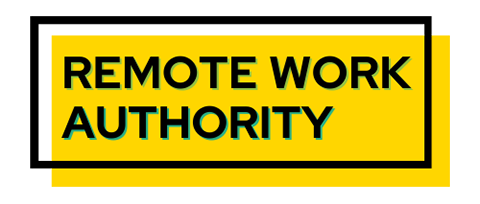A distributed team is one where members are physically located away from each other, operating within different time zones. It is similar to a remote team, where some members may work in the same locations while others work from home or other sites. Both distributed and remote teams are part of the current landscape.
As remote work becomes increasingly popular, more and more companies are embracing the benefits of distributed teams.
This article will explore the benefits and challenges of distributed teams and provide tips for managing a successful remote workforce.
Table of Contents
What Are Distributed Employees?
Distributed employees work for a company or organization but are not based in an office building or central office location. Instead, distributed work is conducted remotely from different physical locations, often using digital tools and technologies to communicate and collaborate with colleagues.
Distributed companies may have employees located in different cities, regions, countries, or even continents, and they may work in different time zones. Depending on the company culture, they can be full-time employees, part-time employees, or independent contractors.
What Is A Distributed Team?
Distributed workforces are made up of individuals working in different locations worldwide, using technology to collaborate and communicate.
The pandemic has caused a significant increase in distributed teams, where team members have remote workspaces in different locations. While the setup offers unique advantages, such as increased flexibility and access to a global talent pool, it also presents challenges that need to be navigated.
The alternative way for employers to build a workforce that is flexible, scalable, and cost-effective is to hire freelancers. They can be hired on an as-needed basis and bring specialized skills and experience to a project. However, distributed teams provide a more cohesive and collaborative approach.
API integration tools like Zapier and Automattic (the team behind WordPress) are pioneering the distributed team model.

The Distributed Workforce Model
The distributed workforce model is a broader concept encompassing several working arrangements, including distributed teams, remote workers, and freelancers.
The model is based on the idea that work can be based anywhere and that companies can tap into a global talent pool to find the expertise they need.
Remote Team Vs. Distributed Team
While “remote teams” and “distributed teams” are sometimes used interchangeably, they can have slightly different meanings.
A remote team has team members working outside a physical office space but in the same city or region. Remote teams may communicate and collaborate using digital tools and technologies, but they are not necessarily spread out across different time zones or areas. Team members (telecommuters) may occasionally have to check in at the office – a hybrid approach.
In contrast, a distributed team has members located in different regions, countries, or continents. They work together using various digital tools and technologies and may have to navigate differences in cultures and languages. Members can also live in multiple time zones meaning their working hours are asynchronous.
So, while all distributed teams are remote and do not share an in-office coworking space, not all remote teams are necessarily distributed.

Integrations
Integrations are important for distributed teams, as they allow team members to collaborate and share information across different tools and platforms.
Distributed teams need tools for team communication, project management, client communication, video conferencing, and more. With hundreds of products on the market, what a team uses must all work together.
- Proper integration can enable team members to connect project management tools with communication platforms or to automate repetitive tasks using workflow tools.
- Integrations can improve productivity and streamline workflows by reducing manual data entry and minimizing the risk of errors.
- They also ensure that team members work from a single source of truth, as information is automatically updated across all integrated platforms.
Planning and managing integrations requires careful planning and coordination to ensure that the right tools are selected and configured correctly.
How Do You Manage A Distributed Team?
Managing a distributed team requires a different approach than operating a traditional, in-person group.:
- Use digital tools to create clear channels for communication and collaboration, such as video conferencing, instant messaging, and project management platforms.
- Establish clear goals and expectations for the entire team, and communicate them clearly and frequently.
- Use team-building activities and social events to foster a sense of camaraderie and team cohesion, even if team members are geographically dispersed.
- A culture of trust is essential when managing a distributed team. Establish clear guidelines and expectations for work hours, deadlines, and communication, and trust team members to complete their work.
- Provide the right tools and resources, so team members have the technology and resources to work effectively.
- Encourage team members to maintain a healthy work-life balance and provide support and resources to help them do so.

Why Does Agile Software Meet Workplace Needs?
Agile software development works well with distributed teams. By emphasizing collaboration, flexibility, and iterative development, it suits today’s rapidly changing and complex workplace for several reasons:
- It emphasizes collaboration and communication between team members, allowing more effective problem-solving and a greater sense of team cohesion.
- Agile is flexible and adaptable to changing circumstances, allowing teams to pivot quickly and respond to new challenges.
- Its development is based on an iterative approach, in which new features and functionality are developed and tested in short cycles. This allows teams to receive feedback and adjust quickly, leading to faster time-to-market.
- Agile emphasizes transparency, with regular progress updates and demonstrations, ensuring everyone is on the same page and working towards the same goals.
- There is a strong emphasis on customer support and delivering value, which is essential in today’s competitive marketplace.
What Tools Do Managers Often Use For Management And Communication?
Remote and distributed team managers rely on various digital tools and video call technology for management and communication:
- Project management tools, like Trello, Jira, and Asana, help managers keep track of project timelines, assign tasks, and monitor progress.
- Instant messaging tools like Slack, Microsoft Teams, or Discord are widely used by remote employees for quick and easy communication. Video conferencing platforms, such as Zoom or Google Meet, are also essential for team meetings and virtual face-to-face interactions.
- Managers may use time tracking tools, like Toggl or Harvest, to monitor how much time team members spend on different tasks and projects.
- File sharing and collaboration tools like Google Drive, Dropbox, and Microsoft OneDrive allow teams to share and plan their workflow on files in real-time.
- Managers can use performance management tools like Lattice or 15Five to provide feedback, set goals, and track progress with team members.

Why Are Distributed Teams The Wave Of The Future?
Distributed teams are seen as the future of work for several reasons:
- By hiring talent from anywhere worldwide, companies can access a much larger talent pool and are not limited to a specific geographic area.
- Virtual teams can save companies money on rent, utilities, and other overhead costs by not having to maintain a physical office.
- Distributed teams offer greater flexibility for employers and employees. Employees can work from anywhere, so employers can scale their workforce.
- These teams are more resilient in the face of natural disasters, political unrest, or other disruptions, as team members can continue to work from anywhere.
- By eliminating commuting time and offering greater flexibility, distributed teams can help employees achieve a better work-life balance.
- Distributed teams can bring together people from different backgrounds, cultures, and experiences, leading to more diverse and creative solutions.


